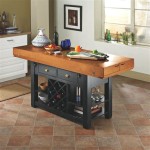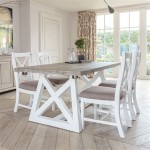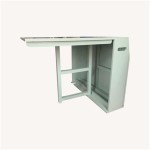The Allure of Indoor Pools with Retractable Roofs: A Blend of Luxury and Functionality
Indoor pools with retractable roofs represent a significant advancement in aquatic design, offering a unique blend of year-round accessibility and the appeal of an outdoor swimming experience. These sophisticated structures allow users to enjoy the controlled environment and privacy of an indoor pool while simultaneously retaining the option to open the roof and bask in natural sunlight and fresh air. The flexibility these pools provide makes them an attractive investment for homeowners, hotels, and recreational facilities seeking to cater to diverse preferences and maximize the use of their aquatic spaces.
The integration of retractable roofs into pool design is not merely an aesthetic choice. It directly addresses the limitations of traditional indoor and outdoor pools. Outdoor pools are susceptible to weather fluctuations, limiting their usability to warmer months. Conversely, traditional indoor pools lack the natural ventilation and sunlight that many find desirable. Pools with retractable roofs present a versatile solution, allowing for optimal conditions regardless of the climate.
The design and implementation of these pools require meticulous planning and careful consideration of various factors, including structural integrity, climate control, and operational mechanisms. The roofs themselves can be constructed from various materials, including glass, polycarbonate panels, and fabric, each offering distinct advantages concerning light transmission, insulation, and aesthetic appeal. The choice of material significantly impacts both the energy efficiency and the overall user experience of the pool.
The operational mechanisms for retractable roofs vary depending on the size and design of the pool. Common systems include motorized systems, which offer automated opening and closing at the touch of a button, and manual systems, which are suitable for smaller pools and require physical effort to operate. The selection of the appropriate mechanism is crucial for ensuring ease of use and long-term reliability.
Key Considerations in Design and Construction
Several critical factors must be addressed during the design and construction phases of an indoor pool with a retractable roof. Structural integrity is paramount, as the roof must withstand wind loads, snow loads, and other environmental stresses. The supporting structure must be engineered to accommodate the weight of the roof and the dynamic forces associated with its movement. Furthermore, the design must account for the expansion and contraction of materials due to temperature changes.
Climate control is another essential aspect to consider. The pool enclosure must be adequately insulated to minimize heat loss during colder months and prevent excessive heat gain during warmer months. Proper ventilation is also crucial for controlling humidity levels and preventing condensation, which can lead to mold growth and structural damage. Integrating energy-efficient heating and cooling systems is vital for minimizing operational costs and reducing the environmental impact of the pool.
Operational mechanisms must be selected based on their reliability, ease of use, and compatibility with the overall design. Motorized systems offer convenience and automation, but they also require regular maintenance to ensure proper functioning. Manual systems are simpler and less prone to mechanical failures, but they may not be suitable for larger roofs. The chosen system must be robust enough to withstand frequent use and environmental exposure.
Aesthetic considerations also play a significant role in the design process. The roof's appearance should complement the overall architectural style of the building and the surrounding landscape. The choice of materials, colors, and finishes can significantly impact the visual appeal of the pool and enhance the user experience. Thoughtful integration of lighting can further enhance the ambiance of the pool area, creating a welcoming and relaxing environment.
The design of an indoor pool with a retractable roof is a complex undertaking that requires expertise in structural engineering, mechanical engineering, and architectural design. Collaboration between these disciplines is essential for creating a functional, aesthetically pleasing, and structurally sound aquatic space.
Benefits of Integrating a Retractable Roof
The integration of a retractable roof into an indoor pool offers a wide range of benefits. One of the most significant advantages is the ability to enjoy an outdoor swimming experience year-round, regardless of the weather conditions. This extends the usability of the pool, allowing users to swim and relax in a comfortable environment throughout the year.
Natural sunlight and fresh air provide numerous health benefits, including increased Vitamin D production, improved mood, and enhanced respiratory health. Opening the roof allows users to bask in the sun and breathe fresh air, creating a more enjoyable and invigorating swimming experience. This is particularly beneficial for individuals who spend long hours indoors and may be deficient in Vitamin D.
Retractable roofs can also help to reduce energy consumption. By opening the roof during sunny days, natural light can illuminate the pool area, reducing the need for artificial lighting. Natural ventilation can also help to cool the pool area during warmer months, reducing the reliance on air conditioning. This can significantly lower energy costs and minimize the environmental impact of the pool.
Additionally, retractable roofs can enhance the aesthetic appeal of the pool area. The ability to transform the pool from an indoor to an outdoor space creates a dynamic and versatile environment that can be adapted to different occasions. This can increase the value of the property and enhance its appeal to potential buyers or guests.
The versatility of retractable roofs makes them a valuable investment for homeowners, hotels, and recreational facilities seeking to maximize the use of their aquatic spaces and provide a unique and enjoyable swimming experience.
Material Selection and Operational Systems
The selection of materials for the retractable roof is a critical decision that impacts the performance, aesthetics, and cost of the pool. Glass is a popular choice due to its excellent light transmission properties and its ability to provide a clear view of the surrounding landscape. However, glass can be heavy and requires a robust supporting structure. Polycarbonate panels are a lighter alternative to glass, offering similar light transmission properties and better insulation. Polycarbonate is also more impact-resistant than glass, making it a safer option in areas prone to severe weather.
Fabric roofs are another option, offering a lightweight and flexible solution. Fabric can be stretched over a frame to create a canopy that provides shade and protection from the elements. Fabric roofs are typically less expensive than glass or polycarbonate roofs, but they may not offer the same level of insulation or durability. The choice of fabric depends on the desired level of transparency, weather resistance, and aesthetic appeal.
Operational systems for retractable roofs can be either manual or motorized. Manual systems are typically used for smaller roofs and require physical effort to open and close. These systems are simpler and less expensive than motorized systems, but they may not be suitable for larger or heavier roofs. Motorized systems offer automated opening and closing at the touch of a button. These systems are more convenient and easier to use, but they also require regular maintenance to ensure proper functioning. The choice of operational system depends on the size and weight of the roof, the desired level of automation, and the available budget.
The operational system also needs to incorporate safety features to prevent accidents and ensure the safety of users. These features may include sensors that detect obstructions, automatic shut-off mechanisms, and emergency stop buttons. Regular maintenance and inspection of the operational system are essential for ensuring its safe and reliable operation.
Proper material selection and a well-designed operational system are crucial for creating a functional, safe, and aesthetically pleasing indoor pool with a retractable roof.
In conclusion, indoor pools with retractable roofs represent a significant advancement in aquatic design, offering a unique blend of year-round accessibility and the appeal of an outdoor swimming experience. The design and construction of these pools require meticulous planning and careful consideration of various factors, including structural integrity, climate control, and operational mechanisms. The benefits of integrating a retractable roof include extended usability, improved health, reduced energy consumption, and enhanced aesthetic appeal. Careful material selection and a well-designed operational system are crucial for creating a functional, safe, and aesthetically pleasing aquatic space.

Best Retractable Glass Roof Rollamatic Roofs

Another View Of One Our Indoor Swimming Pools Retractable Roof Makes It A Perfect All Season Swim And Party Spot

Retractable Pool Roof Airclos

Residential Retractable Pool Enclosure South Brunswick America S Leading Custom Manufacturer Of And Roof Systemsamerica Systems

Covers In Play Retractable Roof Enclosure Over Your Swimming Pool

Dynadome Retractable Pool Enclosures For Year Round

My Experience With A Retractable Pool Enclosure Covers In Play

Retractable Roof Over Pool Contemporary Pools Hot Tubs London By Meia Houzz

Indoor Pool With A Retractable Roof

Openaire Transforms The Plunge At Fit With New Retractable Roof Blooloop








